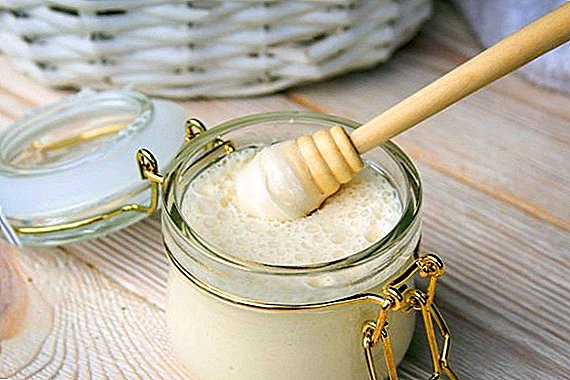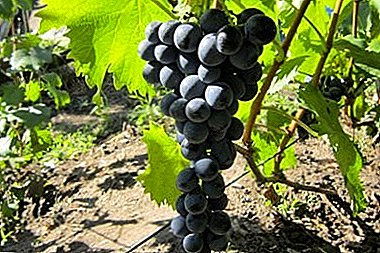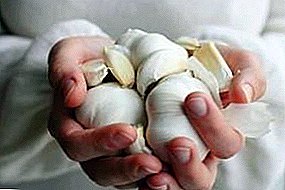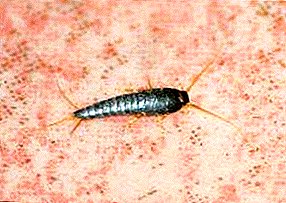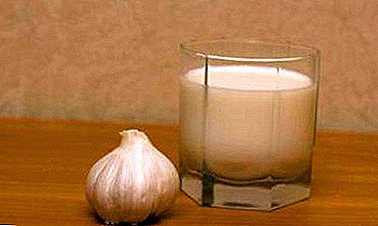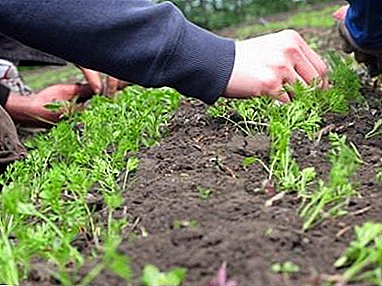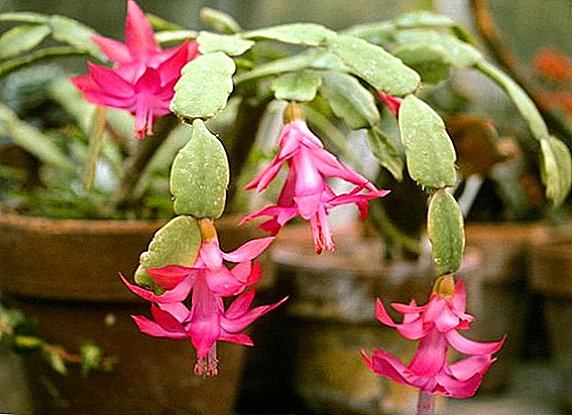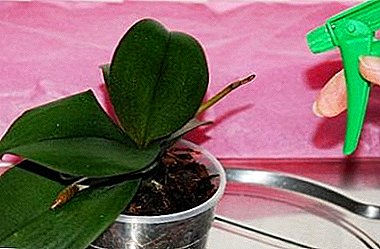
Top dressing is one of the components of the care for indoor beauties and orchids.
This procedure allows you to saturate the plant with the elements necessary for its full development.
Complementary feeding during active growth and phalaenopsis vegetation. But untimely fertilizers can adversely affect the condition of the flower. So, when and how to feed an orchid?
Summary of fertilizer and fertilizer
Top dressing - introduction into the soil of mineral or organic fertilizers. Fertilizers - substances that are used to improve the quality of the soil or to feed the plant. They deliver to the plants the missing (scarce) chemical compounds that ensure their normal growth.
Also, simple (one substance) and complex (extended composition) fertilizers are isolated. An example of simple - phosphorus, potassium, complex - biohumus, humus, manure.
Top dressing is also divided into several types.:
- Root. The goal is to saturate the flower with microelements. The solution is poured into the soil, the plant remains on the pallet for 10-30 minutes.
- Foliar (sheet). It is applied by spraying.
Why do I need to periodically fertilize?
 Systematic top dressing is a guarantee of active growth and lush phalaenopsis bloom. It is important to remember that often fertilize the plant is strictly prohibited. It is advisable to make fertilizers in accordance with a certain period of orchid development.
Systematic top dressing is a guarantee of active growth and lush phalaenopsis bloom. It is important to remember that often fertilize the plant is strictly prohibited. It is advisable to make fertilizers in accordance with a certain period of orchid development.
The need for dressings lies in the fact that they improve the quality of the soil. Useful compounds will allow the orchid to grow faster, reduce the risk of possible diseases, prevent root decay. The reaction of the orchid to the introduced substances can be positive, depending on the specific purpose:
- lush bloom;
- the continuation of the flowering period;
- active bud formation;
- foliage color saturation.
A negative answer is also possible:
- instead of blooming building green mass;
- leaf folding;
- green mass loses color;
- the plant is "aging";
- decrease in resilience and the onset of disease.
To negative symptoms did not occur, it is important to strictly adhere to the rules and schemes for making supplements.
When to feed?
Several factors affect the time and frequency of fertilizer application.
| Influence factor | Description |
| Season | Average:
|
| Phalaenopsis vegetation stage |
|
| Forbidden time | Do not make for a month after orchid transplantation. |
What is allowed and what is not?
The optimal choice is complex fertilizers, on which there is a special mark "for orchids". You can also use complex mineral fertilizers for any indoor plants.
It is also not possible to control the volume and dosage. When choosing the appropriate means, it is necessary to take into account the effect of the components in the composition:
- nitrogen - activates growth;
- calcium - formation of buds, lush flowering;
- phosphorus - A mandatory part of the protein and carbohydrate metabolism, indispensable for young orchids.
Home Appliances
 Fertilizers are better suited for orchids in liquid form. You can also use powders for dilution in water. To make the right choice, you need to look at the ratio of nitrogen, phosphorus and potassium (indicated on the package). Nitrogen is denoted by the letter N, phosphorus - P, potassium - K.
Fertilizers are better suited for orchids in liquid form. You can also use powders for dilution in water. To make the right choice, you need to look at the ratio of nitrogen, phosphorus and potassium (indicated on the package). Nitrogen is denoted by the letter N, phosphorus - P, potassium - K.
For orchids, it is better to choose a complex where potassium prevails in the composition. The next recommendation for the right choice - the level of Ph. It must be neutral or weakly alkaline.
Chemical
Below is an overview of the best store preparations for Phalaenopsis orchid fertilization.
- Bona forte. Vitamin complex with a wide spectrum of action: an increase in the flowering period, strengthening the immune system (the orchid becomes resistant to dry air, drafts, temperature changes), slowing down aging, improving the flow of photosynthesis.
- Greenworld. Nutritional complex in liquid form. Benefits - strengthening the roots and stem, improving the color and strength of the leaves.
- Agricola. NPK 4-5-6. Used for root dressings. Minus - no indicator of acidity.
- Kemira Suite. Complex fertilizer, is available in powder form. Pros - increased growth, reduced risk of disease, improved appearance. Cons - in the composition of the predominant nitrogen.
- Pokon. Concentrated liquid. NPK - 5-6-7. Acceptable use at all stages of the growing season. Easy to digest. The purpose of the application - the duration of flowering, the creation of a bright green mass, the best intensity of color.
In addition to chemical elements, orchids are required and biological additives. You can feed the flower with Baikal EM-1 (bacteria and yeast) or Appin (natural biostimulant).
Folk
 The selection of folk products is huge. For dressings usually use:
The selection of folk products is huge. For dressings usually use:
- potato decoction;
- infusion of onion peel;
- infusion of wood ash.
Organic matter - manure, litter is also popular.. Organic fertilizers for orchids can not be used more than 1 time in 4-6 months, since such compounds have a complex structure.
Other popular recipes also need to be treated with caution, as the plant’s response to such components is unknown.
How to do the work?
Specific actions will vary depending on the purpose of the procedure and the vegetation stage of the plant.
For budding
To extend the flowering time, fertilizing is made 1-2 weeks before the formation of buds:
- Water the plant. The soil is not poured, it should be wet.
- We place the pot with the orchid on a tray with water, leaving it there until the roots are soaked.
- Add fertilizer to the water. Suitable Bona Forte, Effect, Pokon. See the exact dosage on the package.
- We leave phalaenopsis on the pallet for 5-7 minutes.
- We take out the pot and put it in its usual place.
During flowering
The main rule during this period is not to overfeed the plant.:
- 1-2 days before feeding to water the plant.
- Diluted in water GreenWorkd fertilizer at the rate of 300 ml per 1 ml of the liquid preparation. An alternative to the drug is Mr. Color, Rainbow of Flowers.
- We put a pot with an orchid in a transparent container, its diameter must exceed the diameter of the pot by 2 cm.
- In the resulting gap pour the solution and leave for 7-8 minutes.
After flowering
You can make additional feeding during the week after flowering. Orchids have given a lot of power to flowering and requires additional stimulation. The method of feeding is identical as for a flowering plant.
You can take the means of Bon Forte, Agricola, Kemira-Lux (look for the dosage on the package).
Consequences of wrong actions
As a result:
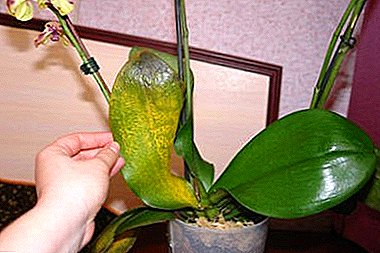 diseases;
diseases;- color cessation;
- root burns.
The plant needs immediate help. The set of actions includes the following.
- Pull the phalaenopsis out of the pot.
- Inspect the roots.
- Remove the dead parts, while not violating the integrity of the land lump.
- For the prevention of decay and infection, treat the root with a weak solution of any fungicide (Acrobat, Oxy, Bordeaux mixture).
- Replant the orchid in a new pot, the size of which is 2-3 cm less than the previous one.
So, top dressing orchids - an indispensable part of quality care. These tropical beauties are quite whimsical and picky, so fertilizers need to be applied carefully. Allowable frequency - 1 time in 2-3 weeks. During active growth or budding frequency increases. It is better to use liquid complex fertilizers as feedings.


 diseases;
diseases;